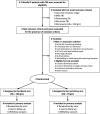Haemoglobin transfusion threshold in traumatic brain injury optimisation (HEMOTION): a multicentre, randomised, clinical trial protocol
- PMID: 36216432
- PMCID: PMC9557781
- DOI: 10.1136/bmjopen-2022-067117
Haemoglobin transfusion threshold in traumatic brain injury optimisation (HEMOTION): a multicentre, randomised, clinical trial protocol
Abstract
Introduction: Traumatic brain injury (TBI) is the leading cause of mortality and long-term disability in young adults. Despite the high prevalence of anaemia and red blood cell transfusion in patients with TBI, the optimal haemoglobin (Hb) transfusion threshold is unknown. We undertook a randomised trial to evaluate whether a liberal transfusion strategy improves clinical outcomes compared with a restrictive strategy.
Methods and analysis: HEMOglobin Transfusion Threshold in Traumatic Brain Injury OptimizatiON is an international pragmatic randomised open label blinded-endpoint clinical trial. We will include 742 adult patients admitted to an intensive care unit (ICU) with an acute moderate or severe blunt TBI (Glasgow Coma Scale ≤12) and a Hb level ≤100 g/L. Patients are randomly allocated using a 1:1 ratio, stratified by site, to a liberal (triggered by Hb ≤100 g/L) or a restrictive (triggered by Hb ≤70 g/L) transfusion strategy applied from the time of randomisation to the decision to withdraw life-sustaining therapies, ICU discharge or death. Primary and secondary outcomes are assessed centrally by trained research personnel blinded to the intervention. The primary outcome is the Glasgow Outcome Scale extended at 6 months. Secondary outcomes include overall functional independence measure, overall quality of life (EuroQoL 5-Dimension 5-Level; EQ-5D-5L), TBI-specific quality of life (Quality of Life after Brain Injury; QOLIBRI), depression (Patient Health Questionnaire; PHQ-9) and mortality.
Ethics and dissemination: This trial is approved by the CHU de Québec-Université Laval research ethics board (MP-20-2018-3706) and ethic boards at all participating sites. Our results will be published and shared with relevant organisations and healthcare professionals.
Trial registration number: NCT03260478.
Keywords: Adult intensive & critical care; INTENSIVE & CRITICAL CARE; Neurological injury; TRAUMA MANAGEMENT.
© Author(s) (or their employer(s)) 2022. Re-use permitted under CC BY-NC. No commercial re-use. See rights and permissions. Published by BMJ.
Conflict of interest statement
Competing interests: None declared.
Figures
References
Publication types
MeSH terms
Substances
Associated data
LinkOut - more resources
Full Text Sources
Medical


